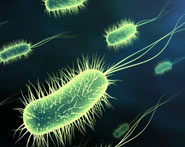


 النبات
النبات
 الحيوان
الحيوان
 الأحياء المجهرية
الأحياء المجهرية
 علم الأمراض
علم الأمراض
 التقانة الإحيائية
التقانة الإحيائية
 التقنية الحيوية المكروبية
التقنية الحيوية المكروبية
 التقنية الحياتية النانوية
التقنية الحياتية النانوية
 علم الأجنة
علم الأجنة
 الأحياء الجزيئي
الأحياء الجزيئي
 علم وظائف الأعضاء
علم وظائف الأعضاء
 الغدد
الغدد
 المضادات الحيوية
المضادات الحيوية|
Read More
Date: 7-11-2020
Date: 6-11-2020
Date: 6-12-2015
|
The Y Chromosome Has Several Male-Specific Genes
KEY CONCEPTS
-The Y chromosome has about 60 genes that are expressed specifically in the testis.
-The male-specific genes are present in multiple copies in repeated chromosomal segments.
-Gene conversion between multiple copies allows the active genes to be maintained during evolution.
The sequence of the human genome has significantly extended our understanding of the role of the sex chromosomes. It is generally thought that the X and Y chromosomes have descended from a common, very ancient autosome pair. Their evolution has involved aprocess in which the X chromosome has retained most of the original genes, whereas the Y chromosome has lost most of them.
The X chromosome is like the autosomes insofar as females have two copies and crossing over can take place between them. The density of genes on the X chromosome is comparable to the
density of genes on other chromosomes.
The Y chromosome is much smaller than the X chromosome and has many fewer genes. Its unique role results from the fact that only males have the Y chromosome, of which there is only one copy, so Y-linked loci are effectively haploid instead of diploid like all other human genes.
For many years, the Y chromosome was thought to carry almost no genes except for one or a few genes that determine maleness.
The large majority of the Y chromosome (more than 95% of its sequence) does not undergo crossing over with the X chromosome, which led to the view that it could not contain active genes because there would be no means to prevent the accumulation of deleterious mutations. This region is flanked by short pseudoautosomal regions that frequently exchange with the X chromosome during male meiosis. It was originally called the nonrecombining region but now has been renamed the malespecific region.
Detailed sequencing of the Y chromosome shows that the malespecific region contains three types of sequences, as illustrated in FIGURE 1:

FIGURE .1 The Y chromosome consists of X-transposed regions, X-degenerate regions, and amplicons. The X-transposed and X-degenerate regions have 2 and 14 single-copy genes, respectively. The amplicons have 8 large palindromes (P1–P8), which contain 9 gene families. Each family contains at least 2 copies.
- The X-transposed sequences consist of a total of 3.4 Mb comprising some large blocks that result from a transposition from band q21 in the X chromosome about 3 or 4 million years ago. This is specific to the human lineage. These sequences do not recombine with the X chromosome and have become largely inactive. They now contain only two functional genes.
- The X-degenerate segments of the Y chromosome are sequences that have a common origin with the X chromosome (going back to the common autosome from which both X and Y have descended) and contain genes or pseudogenes related to X-linked genes. There are 14 functional genes and 13 pseudogenes. Thus far, the functional genes have defied the trend for genes to be eliminated from chromosomal regions that cannot recombine at meiosis.
- The ampliconic segments have a total length of 10.2 Mb and are internally repeated on the Y chromosome. There are eight large palindromic blocks. They include nine protein-coding gene families, with copy numbers per family ranging from 2 to 35. The name amplicon reflects the fact that the sequences have been internally amplified on the Y chromosome.
Totaling the genes in these three regions, the Y chromosome contains 156 transcription units, of which half represent proteincoding genes and half represent pseudogenes. The presence of the functional genes is explained by the fact that the existence of closely related gene copies in the ampliconic segments allows gene conversion between multiple copies of a gene to be used to regenerate functional copies. The most common needs for multiple copies of a gene are quantitative (to provide more protein product) or qualitative (to encode proteins with slightly different properties or that are expressed at different times or in different tissues). However, in this case the essential function is evolutionary. In effect, the existence of multiple copies allows recombination within the Y chromosome itself to substitute for the evolutionary diversity that is usually provided by recombination between allelic chromosomes.
Most of the protein-coding genes in the ampliconic segments are expressed specifically in testes and are likely to be involved in male development. If there are roughly 60 such genes out of a total human gene set of about 20,000, the genetic difference between male and female humans is only about 0.3%.



|
|
|
|
التوتر والسرطان.. علماء يحذرون من "صلة خطيرة"
|
|
|
|
|
|
|
مرآة السيارة: مدى دقة عكسها للصورة الصحيحة
|
|
|
|
|
|
|
نحو شراكة وطنية متكاملة.. الأمين العام للعتبة الحسينية يبحث مع وكيل وزارة الخارجية آفاق التعاون المؤسسي
|
|
|